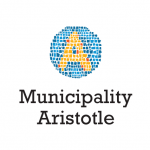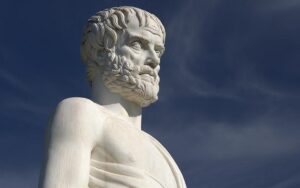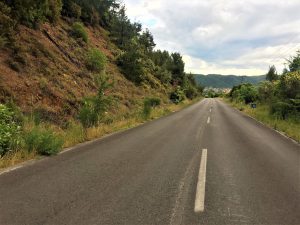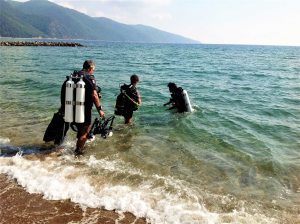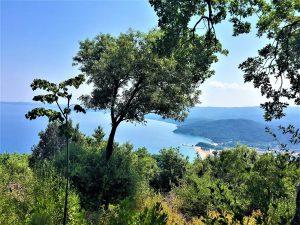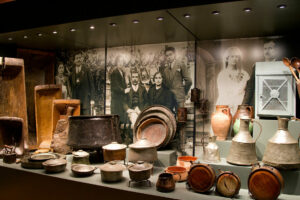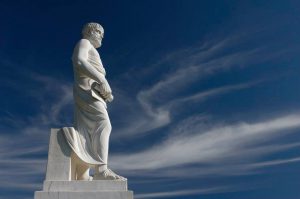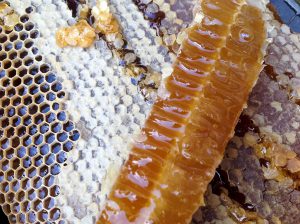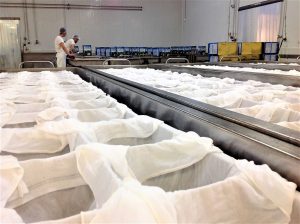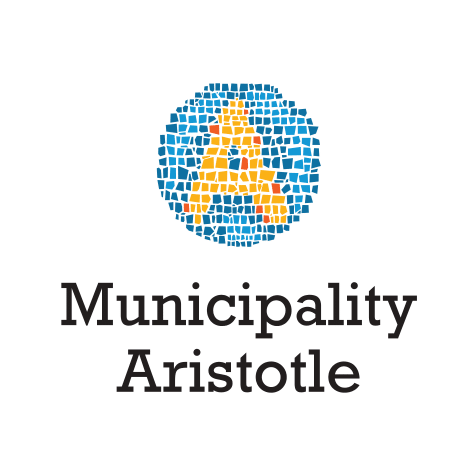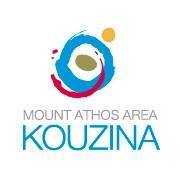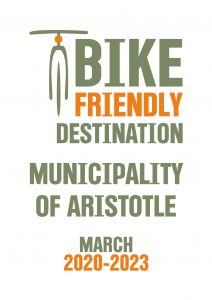The weaving Museum of Arnea
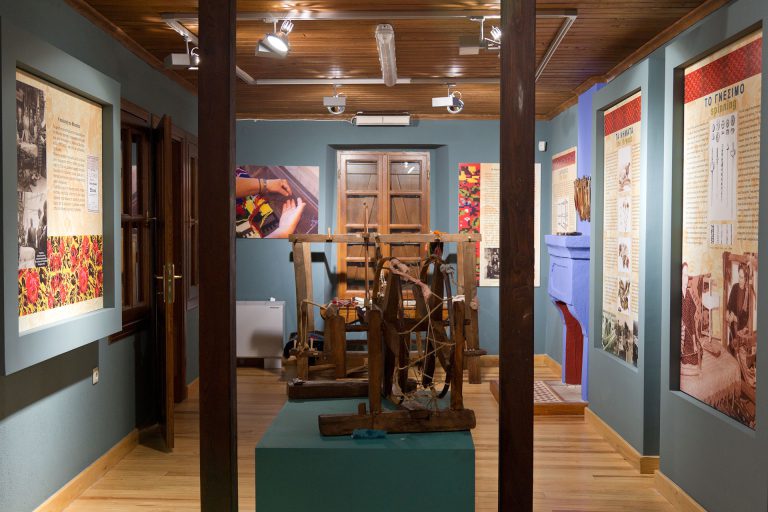
The entire weaving history, the art and the tradition of Arnea will “parade” in front of you as you visit the Museum of Weaving, in the traditional building, recently restored so as to accommodate the lifestyle of former generations.
Indeed, the history of handmade carpets in Arnea is lost over the time: patterns classic geometrical, such as the “krikela”, the “Scissor Sun”, and other techniques, which are recorded at the rest of Macedonia and Thrace, such as also “thilota” and the “nail”, where all dominate in the colourful exhibition rooms. Thus, what dominate are the calligraphic carpets of Arnea, which were and still are used to decorate the walls.
In most of them you will see the date that they were made and the name of the weaver who created the carpet. The subjects come from patterns used embroidery, and are influenced by the neoclassicism, depicting “The Chariot of Eos”, “The dance of the muses” but also:
• historical subjects from modern Greece as the “Dance of Zaloggos” and the
• daily life as “the shepherd”.
The exhibition is being developed in two levels:
• 1. On the ground floor where you see the process of raw materials, such as the wool which becomes yarn. Also tools related to the process preparing the yarn and carpets of bigger size.
• 2. On the first floor are presented the calligraphic carpets and other textiles
• 3. Finally, the visitor has the opportunity to see a room “dressed” with the traditional way of Arnea.
The exhibition also has audio-visual material!
We do suggest you to visit this exhibition. Entrance is free and the experience you collect is simply amazing!
Learn More: Municipality of Aristotle | The Weaving museum of Arnaia (dimosaristoteli.gr)
Learn about textiles: Municipality of Aristotle | Textiles (dimosaristoteli.gr)
The folklore museum of Arnea
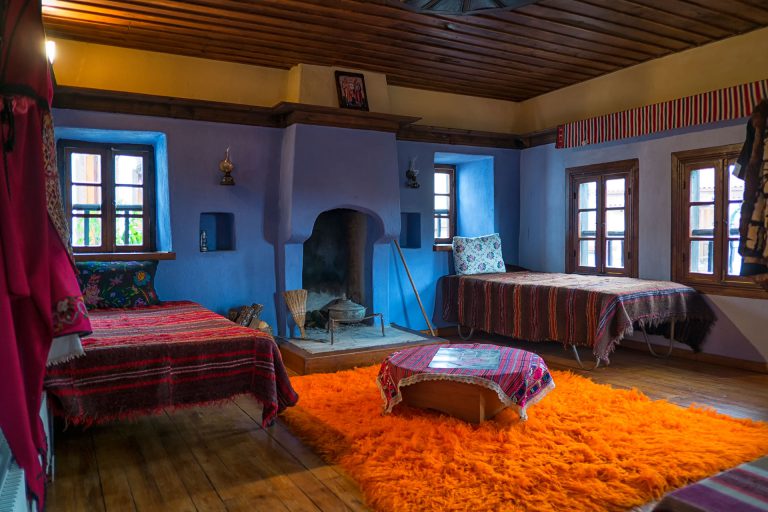
A world coming out from a different era, where everything was so simple- simple but so beautiful. People’s tools, for the mountain and the plains, all the fortune and the efforts of a lifetime, “trapped” with their moments in the renovated stone-built “Archontiko Giatrou”, the famous “Giatradiko”. Somewhere there is set up and the famous loom of Arnea, the one that created the famous carpets- unique samples of folklore art- and the weavers as well, women born to be real laborers and creators.
Open from 10:00 until 18:00
Ticket: 2€
Learn More: Municipality of Aristotle | Historical-Folklore museum of Arnaia (dimosaristoteli.gr)
The cultural center of Ierissos
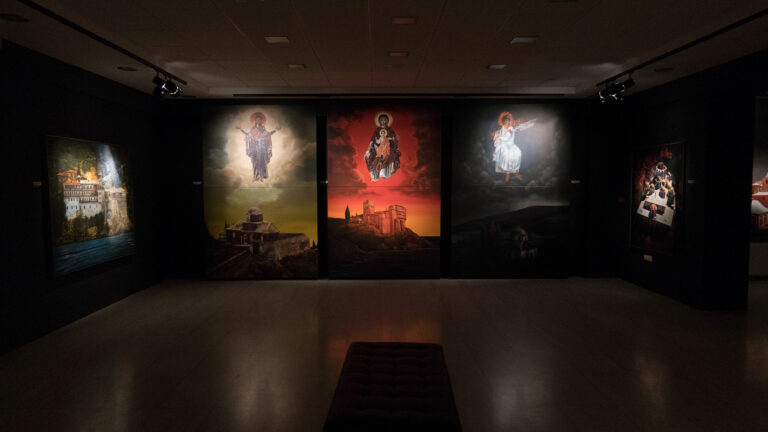
It is the unique center in the whole Macedonia that projects 3d movies. It is housed in an impressive building in the center of Ierissos, since 2004. It was approved by the European Investment Bank as a center for the promotion of the Athonite heritage and the promotion of the Mount Athos area with the use of modern technology.
Of special interest is the movie that shown and presents scenes from the monks’ life in Mount Athos, making the visitors (specially women that are not allowed to entry the monastic state) to feel that walk on the cobble-stoned yards, to be guided in the libraries, admiring the treasures, watching the Divine Liturgy.
The 3D “travelogue to Mount Athos” is available in greek, english, german, russian and bulgarian language.
Do not miss to visit and watch this movie: it is a unique one!
Tickets: adults 6€, children 5€, groups 4€
The Prosforiou Tower
The birds flying around and the fishermen fixing their nets near the pier perfectly match the picture of the lonely, high tower located on the sand. The symbol of Ouranoupoli, the last “postcard” everyone boarding the ship to Mount Athos takes with him, seems to exist there since the 12th century and is the largest and best preserved tower in Halkidiki. The complex consists of the byzantine tower, the small, fortified yard called “barbakas” and the “arsanas” (port) of 1865.
It belonged to the dependency of Prosforion (today’s Ouranoupoli) the original core of which already belonged to the Vatopediou monastery in 1018. Scattered information regarding what happened to the building is found from sources, since the excavations are not yet finished. It is known that in 1379, the despot of Thessaloniki named John Palaiologos was hosted here, that in an earthquake in 1585 it suffered great damage and that in 1858 it was abandoned –a picture commonly seen at that time in Halkidiki. In addition, it was probably burned in 1821, since there are testimonies that in 1858 it was in a terrible condition and abandoned. Its current form came from the extensive repair and reconstruction that followed.
In 1924, after the exchange of population, refuges from Asia Minor settled in the dependencies and founded Ouranoupoli. Several houses were built over time and gradually joined the building set. In 1928, the couple Joice and Sydney Loch came as members of humanitarian groups. They settled in the tower and offered essential help to the refuges and the victims of the 1932 earthquake.
STRUCTURAL-HISTORICAL PHASES
The building has been through at least three main structural-historical phases. The byzantine phase (11th-12th century) includes the lower building without the two floors. In the next phase, dated during the Ottoman rule and probably after the 1585 earthquake, three more floors were added, two of which are preserved until present day. The third floor might have been another level of battlements.
The inner wood paneling of the building and the roof, preserved until present day were built in the third phase, and were included in the reconstruction that finished in 1862. The external oblique retaining wall (called skarpas), was built after the reconstruction.
The “barbakas”, i.e. the fortified perimeter, is attached to the eastern side of the tower that seems to be an addition during the early Ottoman rule, with subsequent repairs. The accommodation and storage spaces inside barbakas were designated in the middle 19th century. Arsanas (harbor) is located northwest of the tower, and was built in 1865 together with a pier that nowadays does not exist. It consists of the semi basement storage of the dependency’s boat, the warehouses in the semi upper floor and the upper floor. There were also other buildings: warehouses, barns, olive mills, wells. Nowadays only the “halkadio” and the “kolligadiko” located a little farther, are preserved.
THE LOCHS
The Australian writer and journalist Joice NanKivelli treveled to Europe to report the events of the 1st world war. In 1919, she married Scotish journalist and writer Sydney Loch and together they continued traveling and settling in several countries of the world offering humanitarian help (they belonged to the religious group of Kouakers, or Christian Friends). In one of their journeys, they went to Thessaloniki and from there to Ouranoupoli. In 1928, they decided to settle, initially in the island of Ammouliani and then to the Prosforiou tower that charmed them.
Older people still remember them, they talk about the ”Madam” and Sydney, for helping them during the difficult times after the 1932 earthquake, for the way they used to run around all day long, distributing drugs to the refuges, for how they used to take their lanterns at night and visit people in need. Their largest contribution was the preservation of the traditional patterns of handmade textiles. Sydney designed based on patterns from murals of Mount Athos and Persian carpets. Joice showed how to naturally color the wool, to the already experienced with weaving, women of the Asia Minor refuges. They both passed away in Ouranoupoli, Sydney in 1954 and Joice in 1982 at the age of 95.
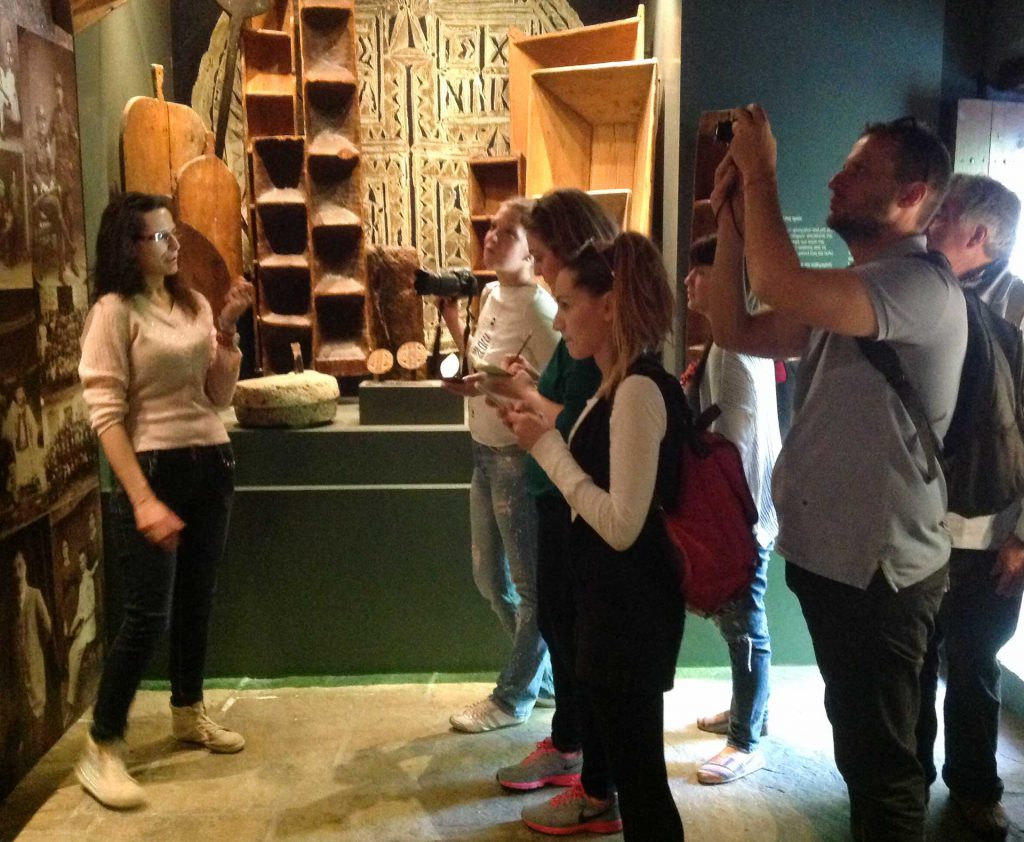
Museums
Municipality Aristotle
Aristotle's Park
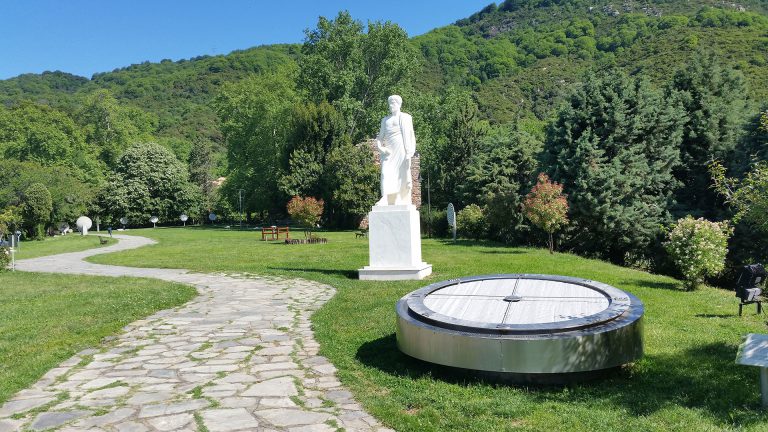
The Aristotle’s Park, a unique theme park of Halkidiki, is located at an altitude of about 500 meters, in the historical village of Stagira, beside the remains of Machalas, the capital of Mademochoria. It is worth visiting for its interesting instruments and the great view to the gulf of Ierissos. The park preexisted and the wonderful location was chosen in 1956 to host the statue of Aristotle, made by sculptor Nicholas, in honor of the great philosopher who was born in Ancient Stagira.
The unique interactive instruments were placed there in 2003 by the Municipal Corporation of Stagira-Akanthos. They are experimental instruments, operating by rules of physics that are mentioned in Aristotle’s textbooks and especially in the one called “The Naturals”. With this addition, the park has become a favorite destination for every visitor and school, since it combines recreation, entertainment and education. It is estimated that has more than 15.000 visitors during the summer. The tower of Madem Agas is also located there, with the house that was the administrative center of Sidirokafsia mines.
THE EXPERIMENTAL INSTRUMENTS
– Compass: It is placed in front of the statue of Aristotle and symbolizes that his philosophy has reached every part of the world, and is a starting point of modern worldwide scientific thought, and belongs to humanity. It displays the direction and distance of the most famous cities in the world, in relation to the park.
– Telescope: Using the modern telescopes placed in specific spots, the visitor can focus on and enjoy details of the fantastic view to the Ierissos gulf and to the Athonite peninsula.
– Prism: The white sunlight passes through the special prism and the famous “colors of the rainbow” are analyzed due to the different speeds of each individual radiation, since each different wavelengthed radiation exits through a different angle.
– Sun clock: The large, horizontal sun clock shows the exact time of the place you are. There is a difference of 1 hour and 25 minutes to the current time during summer and 25 minutes difference during winter. The curved lines on the plate of the clock are for the identification of the current month.
– Lens: The sign next to the lens informs us that every photon, i.e. every minimum amount of light, has little energy by itself, but when every one is concentrated in one spot then that energy becomes greater.
– Pentaphone: It consists of five large pieces of granite that have been calculated to produce a sound of different frequency, a different note. These five notes sound according to the pentaphone ancient scale.
– Optical discs: Experimenting with the optical discs, you will find that when the images pass in front of our visual field with great speed, the human eye does not understand them as different, but it creates a continuous visual whole as if we are watching a movie. This happens because the impression of the image lasts for 1/16 of a second on the optical nerve due to inertia. This quality of the eye is called persistence of vision. Cinema actually depends on the “inability” of the eye to see more than 24 images per second.
– Pendulum: Older people will remember and younger will learn that the energy of one of the systems that initiates the oscillation is transferred to the other due to conjunction. The effect is that the oscillation width is reducing into the first system, while it is increasing into the next.
– Water turbine: By rotating the lever we can create a swirl in the liquid that is contained in the transparent container, and understand the physics of the phenomenon, or compare it with the rotation of the wind that creates a tornado.
– Inertia spheres: By playing with the inertia spheres, we are always impressed by the phenomenon of transfer of momentum, when during the first impact, the initial momentum is maintained and is consecutively transferred from the first sphere to the last.
– Parabolic reflectors: They are placed in a straight line with a large distance from each other. If two people stand in front of each one, they can have a conversation even if they whisper. This happens because the transferred through air sound waves, are reflected, their energy is concentrated in the center and the sound ends up amplified in the ears of those participating in the experiment.
Plates with subparagraphs of aristotle
The interactive experimental instruments are accompanied by relevant subparagraphs posted on plates, from the preserved work of the great philosopher.
…Τούτο δ’ η ταχύτης ποιεί της κινήσεως, ώστε δοκείν έτερον είναι το ορών και το ορώμενον…
[…the result is produced by the speed of the movement, in order to show the difference between the seen and the shown…]
ABOUT SENSES AND FEELINGS
…Περί δε της αληθείας, ως ου παν το φαινόμενον αληθές…
[…in terms of truth, not every phenomenon is real…]
AFTER THE NATURAL III
…Νους δε υπό του νοητού κινείται…
[…the movement of the mind is caused by the understandable…]
AFTER THE NATURAL I
… Τα μεν ουν είδη το νοητικόν εν τοις φαντάσμασι νοεί…
[…mental psyche comprehends the species in fantasy images…]
ABOUT SOUL III
…Πότερον δε γέγονε ποτέ κίνησης, ουκ ούσα πρότερον, και φθείρεται πάλιν ούτως ώστε κινείσθαι μηδέν…
[… Movement was one day born, not previously existing and wears down so that it does not exist…]
NATURAL HEARING IX
…εις άπειρον δε κινείσθαι μηδέν…
[…nothing is indefinite…]
NATURAL HEARING IX
…οίον ει εξ αέρος εστί το αισθητήριον, καθ’ έστιν ο αήρ και ψόφου και χρόας…
[…air is the element between the senses of color and sound…]
ABOUT SOUL III
…Το πρώτως κινούν εν άπασιν είναι τοις κινουμένοις ακίνητον…
[…the primarily driven is immovable…]
NATURAL HEARING IX
…Άπαν το κινούμενον υπό τινος ανάγκη κινείσθαι…
[…everything moving is needed to be moved by something…]
NATURAL HEARING VII
…Διό και δοκεί ο χρόνος είναι της σφαίρας κίνησης ότι ταύτη μετρούνται αι άλλαι κινήσεις και ο χρόνος ταύτη τη κινήσει…
[…this is why time seems to be the movement of the sphere (of the universe). Other movements and time also are measured by it…]
NATURAL HEARING IV
…Αλλά τάχιστα κινείται τα εγγύτατα του κινούντος, τοιαύτη δ’ η του όλου κίνησις εκεί άρα το κινούν…
[…the things closest to the one that moves them move faster, this is the movement of the universe, in the circumference of which the thing that moves, exists …]
NATURAL HEARING IX
… Ηχώ δε γίνεται όταν υπό του αέρος, όστις ένεκα του αγγείου, όπερ περιώρισε και ημπόδισε αυτόν να διαχυθή, έγεινεν είς, πάλιν ο αήρ απωσθή, ώσπερ σφαίρα…
[…echo does not happen when the air (sound wave) limited in the vase, not allowed to dissolve, is repelled again as a sphere…]
